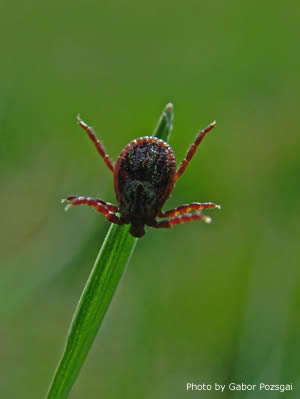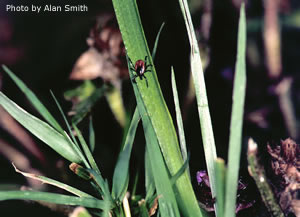
Project Contact
Project Summary
The effect of land use change and climate change on ticks and tick-borne diseases.
Ticks are increasing in Britain and of increasingly urgent concern because they transmit pathogens, such as Lyme Borrelia, Babesia and Louping-ill virus (LIV), that have important impacts on biodiversity, animal and human health and the rural economy. In order to manage ticks and tick-borne diseases (TBDs) it is essential to understand the key environmental determinants of disease persistence and spread. Major current environmental changes include climate change and Common Agricultural Reform, including agro-environment and woodland regeneration schemes. We are investigating the impact of these major environmental changes on ticks and TBDs by linking field data, GIS and mathematical modelling.
We are collecting field data to determine the effect of habitat, hosts and land management change on tick abundance and tick-borne disease prevalence and this is being linked to a GIS that is being developed to predict tick abundance across Scotland based on spatial data on habitat, temperature, rainfall, elevation and host densities. We are collaborating with the Moredun Research Institute and Scottish Agricultural College in a study to determine the biotic and abiotic determinants of LIV prevalence among sheep farms. Due to the complexities of these host-pathogen systems, we are developing mathematical models to predict pathogen spread over landscapes according to habitat heterogeneity, climate and land use change. This study is part of a new SEERAD Centre of Excellence featured topic on the following web link http://www.sac.ac.uk/research/animalhealth/
Lyme disease
 Sixteen woodland sites across Scotland are being used to test the role of small mammals, birds and deer on Lyme Borrelia prevalence in ticks. This Lyme Borrelia study is also assessing the human risk to Borrelia exposure by a questionnaire survey.
Sixteen woodland sites across Scotland are being used to test the role of small mammals, birds and deer on Lyme Borrelia prevalence in ticks. This Lyme Borrelia study is also assessing the human risk to Borrelia exposure by a questionnaire survey.
For further information on Lyme disease, symptoms, tick removal etc, you might like to try the Health Protection Agency's website.
|
Updated: 23 Jan 2024, Content by: MJ
|
